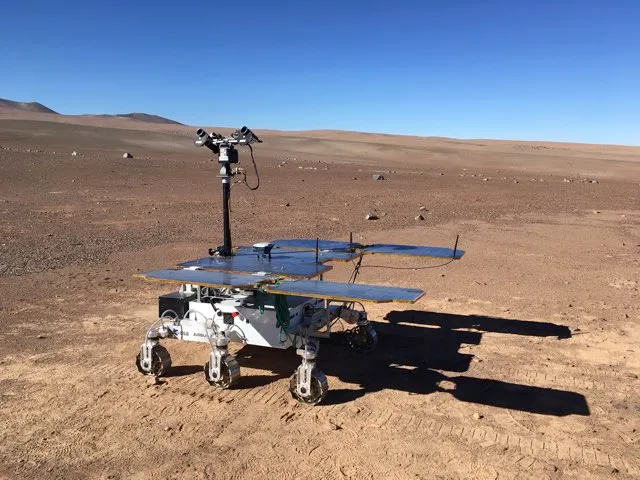- The launch of ESA's ExoMars mission has been postponed until 2022.
- The Rosalind Franklin rover will not be ready in time for the scheduled launch in 2020 without 'sacrificing essential remaining tests'.
- The next available launch date, when Earth and Mars are in specific positions, is not until between August and October 2022.
The ExoMars mission to the Red Planet has been postponed for at least two years.
The European Space Agency (ESA) and Russian state space corporation Roscosmos announced the Rosalind Franklin rover will not be ready for the scheduled launch to Mars in the summer.
Revealing the delay at a video press conference from Paris, ESA director general Jan Woerner said a number of tests still needed to be successfully conducted, but that there would not be enough time before the launch window.
Read more about ExoMars:
Given that the journey from Earth to Mars can only be attempted when the planets are in specific positions, the next launch date will not be until between August and October 2022.
Professor Woerner said: “After carefully reviewing reports, we have together accepted the advice that launching this year would mean sacrificing essential remaining tests. So we have therefore jointly decided, and today confirmed, this decision to move the ExoMars mission to a later launch opportunity, namely 2022. This is a very tough decision, but it is, I’m sure, the right one.”
While the outbreak of coronavirus has not directly impacted the launch delay, it has meant the movement of those working on the ExoMars rover has been limited in recent days.
Prof Woerner explained: “We discussed all these issues before the virus outbreak was as strong as it is right now in Europe, so – and even at that time we said – the probability reduced from day to day. So to say it’s coronavirus is the one and only reason, that would be not at all fair.
“But of course now, in this situation, we see that the coronavirus has also an impact on the preparation, because people from different places of industry in Russia, in Italy and France cannot move easily as in the past, so therefore there is also an impact.
“But I would not like to say the coronavirus is the one and only reason, but it has an impact on the mission, yes.”

Named after the British DNA pioneer Rosalind Franklin, the six-wheeled robot will search for life on Mars.It is equipped with a two-metre drill to take samples from below the surface where they will have been protected from the harsh radiation environment.
Europe’s first planetary rover was assembled at Airbus in Stevenage, in Hertfordshire.
The project, which started in 2005, has waited a long time for completion, facing a number of obstacles along the way.Now further tests to the spacecraft, with the final hardware and software, are needed.
Read more about exploring Mars:
- Marsquakes caused by tectonic activity, NASA’s InSight probe confirms
- Wild ideas in science: We've already found life on Mars
The latest ExoMars parachutes dynamic extraction tests have been completed successfully at NASA’s Jet Propulsion Laboratory, and the main parachutes are ready for the two final high-altitude drop tests in March in Oregon, US. The descent module has been undergoing tests in the the past month.
Meanwhile, the descent module and landing platform have been undergoing environmental testing in Cannes, France, to confirm the spacecraft is ready to endure the harsh conditions of space on its journey to Mars.
The briefing was due to take place in Moscow but the coronavirus outbreak meant it was conducted via video, with Roscosmos director general Dmitry Rogozin unable to join because of technical difficulties.
ExoMars is a joint programme between ESA and Roscosmos, with the primary goal to determine if there has ever been life on Mars.
Reader Q&A: Why do we never see video footage from Mars?
Asked by: Richard O’Neill, Glasgow
Video footage requires much higher data transmission rates than still images, and it can take several hours for NASA to receive just one high-resolution colour image from Mars.
Engineers are looking at switching from radio to infrared communication, because the much shorter wavelength offers far higher data rates. The next generation of Mars landers may then send back HD video imagery direct from the Red Planet.
Read more: